The Future of Ethereum ETF from the Success of Bitcoin ETF
For many large groups of non-crypto native capital, Ethereum has much lower buy-in as a key portfolio allocation.
 JinseFinance
JinseFinance
Source: Four Pillars; Compiled by: Baishui, Golden Finance
The SEC is expected to approve spot Ethereum, which could bring in up to $5 billion in inflows in the first six months.
The approval of an Ethereum ETF could increase the yield of Ethena's synthetic dollar sUSDe, just as it did after the approval of a Bitcoin ETF.
Ethena's products are subject to risks associated with volatility in funding rates, liquidity challenges, and potential vulnerabilities in smart contracts and custody operations. However, these issues are now well addressed in a transparent manner.
Ethena plans to enhance the utility of its ENA token and prepares to launch its Ethena Appchain.
2024 is a unique year for the crypto industry. From an institutional perspective, the year begins with the approval of a Bitcoin ETF. This allows traditional investors to gain exposure to Bitcoin’s price action through regulated financial products traded on established stock exchanges, without having to directly own or manage cryptocurrencies. This is a factor that brings positive sentiment to the market, leading to growth in the cryptocurrency market cap.
On the crypto side, the trend is to launch your own Rollup and memecoin. Compared to the last bull cycle, there are not many significant new primitives built and used by crypto users. However, in the DeFi dapps space, Ethena stands out. Ethena’s synthetic dollar USDe became the fastest crypto dollar to reach $3 billion, surpassing the records of DAI and USDC. Many factors contributed to this success, including its unforkable architecture, unique business model, and sustainable yield opportunities.
Looking atCurrently, one of the biggest market focuses is the expected Ethereum ETF approval, which is expected to be announced in July this year. The approval of an Ethereum ETF could bring new liquidity to the Ethereum ecosystem, which could lead to other opportunities. Second-wave factors could bring new opportunities for Ethena's products (USDe, sUSDe, and ENA). In this article, let's explore the current sentiment around Ethereum ETFs and what this means for Ethena.
So, what is the current sentiment about Ethereum? Prior to May 2024, people were skeptical and uncertain about the Ethereum ETF. This uncertainty was caused by the U.S. Securities and Exchange Commission's (SEC) historical reluctance to approve cryptocurrency ETFs, especially ETFs pegged to altcoins such as Ethereum. As of July 2024, the U.S. Securities and Exchange Commission (SEC) has taken steps to approve a spot Ethereum ETF. Following its approval of a Bitcoin spot ETF earlier this year, the SEC approved a rule change in May 2024 to allow exchanges to list spot Ethereum ETFs. Several asset managers, including BlackRock, Bitwise, and Fidelity, have submitted applications for these products. The spot ETF is likely to begin trading on July 23.
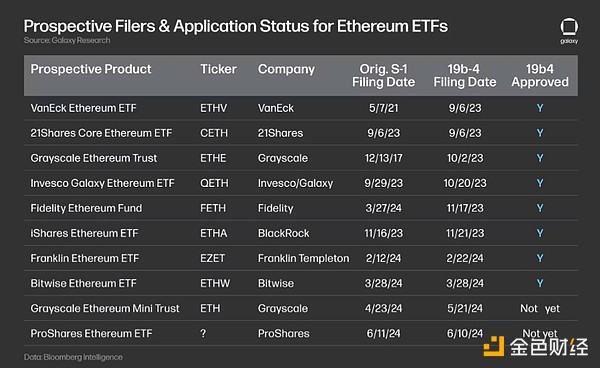
Source: Ethereum ETF Market Size | Galaxy
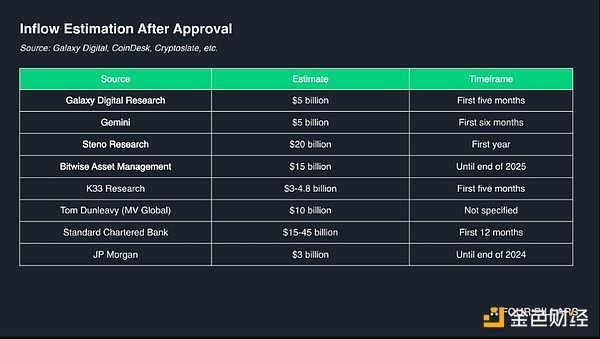
Cryptocurrency exchange Gemini predicts that the spot Ethereum ETF could see up to $5 billion in net inflows in the first six months of trading. Analysts at JPMorgan, on the other hand, are more conservative in their estimates, predicting $3 billion in net inflows in 2024. Many analysts use the performance of Bitcoin ETFs as a benchmark, estimating Bitcoin ETF inflows between 15% and 50%. The Bitcoin ETF attracted $15.1 billion in net inflows in its first five months of trading. There is also debate over whether the approval of an Ethereum ETF will have as significant an impact on ETH prices as the Bitcoin ETF did on BTC. Some analysts believe the impact could be much muted due to current market conditions and investor saturation. Ilan Solot, co-head of digital assets at Marex Solutions, said: “Ubiquitous pessimism is a strong basis for outperformance. The same is true for sell-the-news strategies, which many will try to replicate from the BTC ETF. However, I am concerned that many inflow forecasts may be over-benchmarked by comparing to BTC ETF numbers.” 2. Ethereum ETF Approval Brings Opportunities to sUSDe Approval of a spot Ethereum ETF could make sUSDe an attractive option for investors, similar to the recent experience of Bitcoin ETF approval. Additionally, the approval could bring more institutional capital to the Ethereum ecosystem, potentially increasing demand for USD-denominated yield assets such as sUSDe.As a synthetic dollar that offers a high yield, sUSDe could become an attractive option for investors who want to maintain USD exposure while benefiting from Ethereum market growth.
As a complementary investment strategy to Ethereum ETF exposure, sUSDe could be a good choice. Let’s first look at what happened during the last Bitcoin ETF approval and examine how sUSDe yield works and potential influencing factors.
The approval of the Bitcoin ETF had a profound impact on the market, pushing up prices and raising funding rates. As more traders took long positions in anticipation of price increases, funding rates (i.e., periodic payments between long and short positions in the futures market) rose sharply. These rates are affected by the supply and demand dynamics of the underlying asset.
Prior to the ETF’s approval, funding rates were relatively stable, hovering around 10%. However, after approval, these rates spiked dramatically, reaching as high as 50% annualized. Similarly, the approval of the Ethereum ETF could push up funding rates on ETH perpetual futures, benefiting sUSDe holders, as the token’s yields are derived in part from these funding rates.
In addition, the price of Bitcoin has also risen since its approval. This chart shows the correlation between Bitcoin’s price and the annualized funding yield of perpetual futures contracts from July 2023 to July 2024. The data shows that both Bitcoin’s price and funding rates rose sharply after the ETF was approved. The SEC’s approval of the Bitcoin ETF on January 10, 2024, led to a sharp surge in Bitcoin’s price, climbing from about $40,000 to nearly $80,000 in a few months.
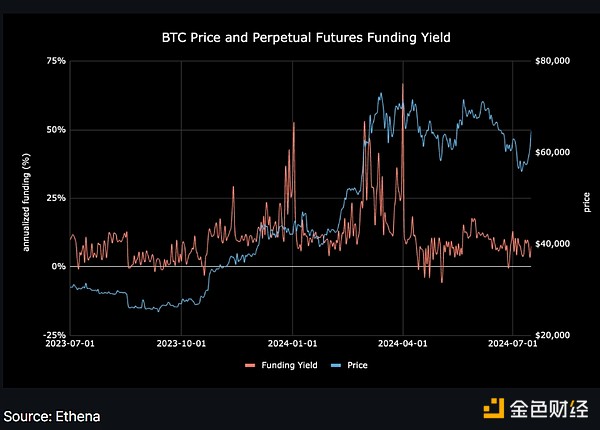
After the approval of the Bitcoin ETF, USD-denominated assets such as Ethena USDe have risen to prominence. These assets offer stability and attractive yields, making them ideal collateral for DeFi platforms. For example, after the ETF was approved, sUSDe's yield soared to more than 30%, highlighting its growing appeal among investors seeking stable and high-yielding assets. Let's take a look at how this yield works and what are the potential factors that may affect the yield.
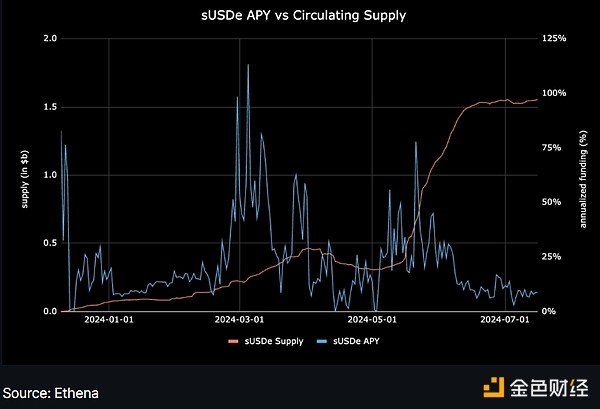
Ethena's synthetic dollar token USDe becomes a particularly attractive option after the approval of the Bitcoin ETF. By taking advantage of increased market activity and higher financing rates, USDe could generate up to 30% in returns after the ETF is approved. This impressive return was achieved through a combination of strategies, including delta hedging of staked Ethereum collateral and exploiting the widening spread between spot and futures markets through its basis arbitrage. Let’s look at how it works and why an Ethereum ETF could influence this return.
2.2.1 How sUSDe’s income is generated
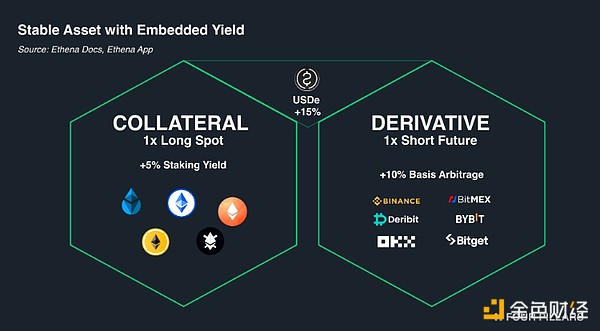
Source: Yield Explanation | Ethena Labs
The income mechanism of sUSDe (Staked USDe) in the Ethena protocol operates through a “Token Vault” system with rewards, similar to other staking tokens such as Rocketpool’s rETH. When users stake their USDe, they receive sUSDe tokens, which represent a fractional interest in the total USDe held in the staking contract.
The protocol generates yield from two main sources: staking rewards for holding assets like stETH as collateral, and funding and basis earned from delta-hedged derivative positions. This yield is then distributed to sUSDe holders through the increase in the value of sUSDe relative to USDe over time. Importantly, the protocol ensures that the value of sUSDe can only increase or remain stable, with any potential losses covered by Ethena’s insurance fund. (However, coverage by the insurance fund is currently only around 1%.) Users don’t need to take any additional action to receive yield; simply hold sUSDe to benefit from the returns generated by the protocol.
2.2.2 Ethereum ETF and sUSDe Yield
One of the key factors driving the rise in sUSDe yields is the persistence of base rates and financing rates in the perpetual futures market. With the approval of the Ethereum ETF, it is expected that the demand for perpetual contracts will increase as institutional investors may seek to invest in Ethereum through various financial instruments. This increase in demand may bring about a sustained positive financing rate environment, benefiting sUSDe holders, who may receive additional income from these financing payments.
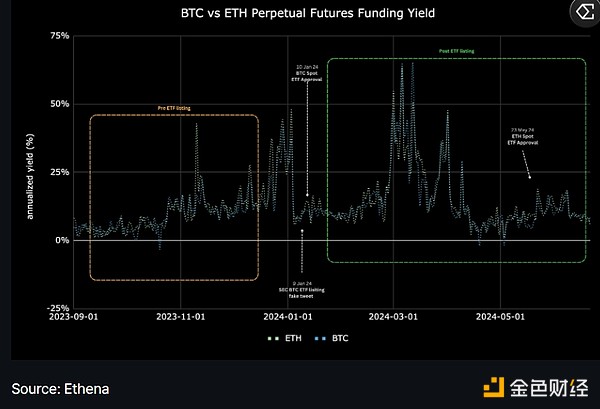
As more spot volumes move to regulated ETFs, the lag in spot demand on offshore exchanges could create interesting arbitrage opportunities.This scenario could lead to a sustained base between spot and futures prices that traders could exploit and potentially generate higher returns for sUSDe holders. Additionally, positive sentiment following the ETF approval could push up funding rates, further increasing sUSDe’s earnings potential. Historical data shows that funding rates tend to rise during periods of positive sentiment.
However, it is important to note that market dynamics can be complex and unpredictable, and actual results may vary depending on a number of factors.
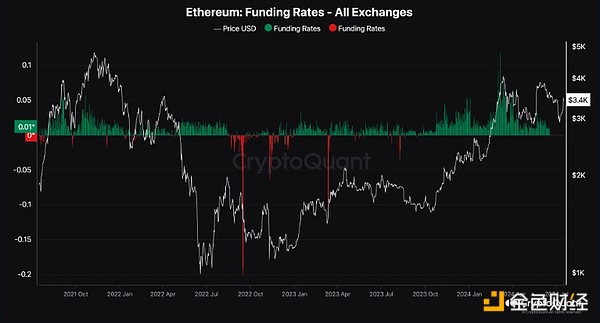
Source: Ethereum: Funding Rate - All Exchanges | CryptoQuant
Ethena grew in a short period of time, surpassing the previous records of other cryptocurrencies. It was the fastest cryptocurrency to reach $3 billion, taking only about 200 days. This raises the question: will this growth continue? What are the risks? In this section, let's look at some of those risks.
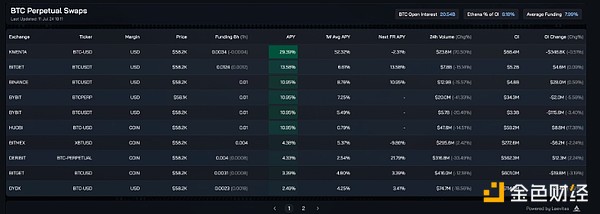
Source: App | Ethena
Ethena faces risks associated with funding rates and liquidity. If there are more short positions than long positions, the funding rate may become negative, causing the protocol to lose money. If the funding rate becomes negative, the protocol will need to pay a large amount to long positions, which may deplete the reserve fund (insurance fund). According to Ethena's research, the total yield of stETH and short ETH funding is positive on 89% of the days, but negative on 11% of the days.
This situation may become more difficult to manage as USDe's market capitalization grows too large, making it difficult to maintain its delta-neutral position and tap the reserve fund. In addition, liquidity risk will arise if the underlying derivatives market is not liquid enough. This may affect the stability of USDe and the total returns distributed to stakers. For example, if the liquidity of centralized exchanges decreases during a market downturn, Ethena may have difficulty rebalancing positions.
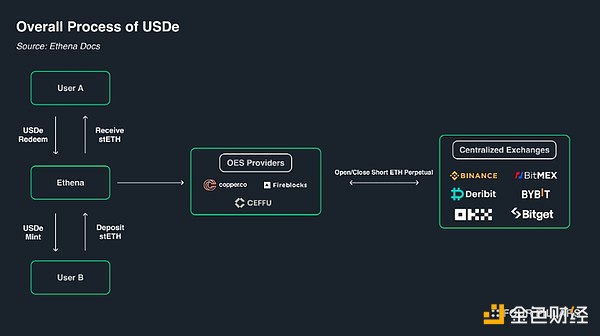
Source: Solution: Internet Bonds | Ethena Labs
Ethena also faces custody and smart contract risks. The protocol relies on external platforms, such as centralized exchanges and over-the-counter settlement (OES) providers, which poses potential risks stemming from their operational or security vulnerabilities. If these platforms face bankruptcy or operational issues, it will affect Ethena's ability to execute trades and maintain its delta-neutral position. However, if a centralized exchange goes bankrupt, Ethena's perpetual positions will be closed, but the collateral assets themselves should be safe because they are not on the exchange in the first place.
In addition, smart contract vulnerabilities or errors may lead to unexpected consequences or be exploited. While Ethena has implemented measures to mitigate these risks, such as using multiple providers and active monitoring, they remain a significant concern.
As Conor Ryder, head of research at Ethena, said, Ethena has potential risks, but it is one of the projects that has been publicly researched and has built a real-time dashboard to disclose the status of Ethena.
These dashboards, accessible on the Ethena website and other platforms such as Dune Analytics and DefiLlama, provide real-time information on custodial wallet holdings, exchange subaccount positions, on-chain wallet assets, USDe supply, and key USDe and sUSDe metrics. The position dashboard displays detailed information about collateral assets, derivative positions for delta hedging, and USDe circulation. (Some information is not accessible on other platforms.)
Ethena head of research Conor Ryder also said: "To be clear, USDe is not safer or better than any other project - we just provide a risk profile that is not related to other DeFi."
Ethena launched its governance token ENA on April 2, 2024. The launch of the ENA token marks a milestone in Ethena's move towards decentralization and community governance. As part of the launch, Ethena distributed 750 million ENA tokens, 5% of the total supply of 15 billion, to early ecosystem contributors and participants of its "Shard Campaign."
Ethena is now incentivizing participants to participate in the Ethena ecosystem. It previously ran the Season 1 "Shards" campaign for the launch of the ENA token in early April 2024. Ethena is currently in the Season 2 "Sats" campaign, which will end on September 2, 2024. This campaign incentivizes participants to earn Sats through strategies involving Pendle and Morpho, with a total token distribution commitment of 15-20% across all points campaigns.
ENA's token economics are designed to balance incentivizing contributors and maintaining an active ecosystem. Core contributors hold 30% of the token distribution, investors hold 25%, the Ethena Foundation holds 15%, and the remaining 30% is used for ecosystem development, including airdrops and new project financing.
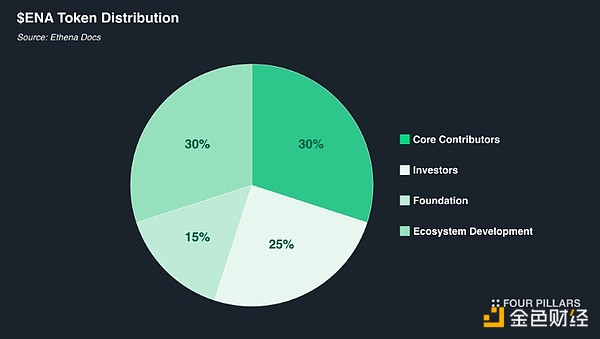
Source: ENA Token Launch — Ethena Labs
Like many utility tokens, $ENA is the governance token for the Ethena protocol, allowing holders to make decisions on a variety of matters, including decisions on USDe collateral assets (modification or addition), decisions about custodian entities (OES providers), cross-chain implementations, delegation, which exchanges to use, and choosing a risk management framework.
However, the current ENA token does not currently have much utility. Even though Ethena's TVL is growing rapidly and it has become one of the top projects generating a lot of revenue, it is not currently shared with token holders.
This will change a lot in the upcoming Ethena development. Ethena will not be just another DeFi project. It has a roadmap that will make $ENA more opportunistic, and those two opportunities are potential revenue sharing and the Ethena Appchain.
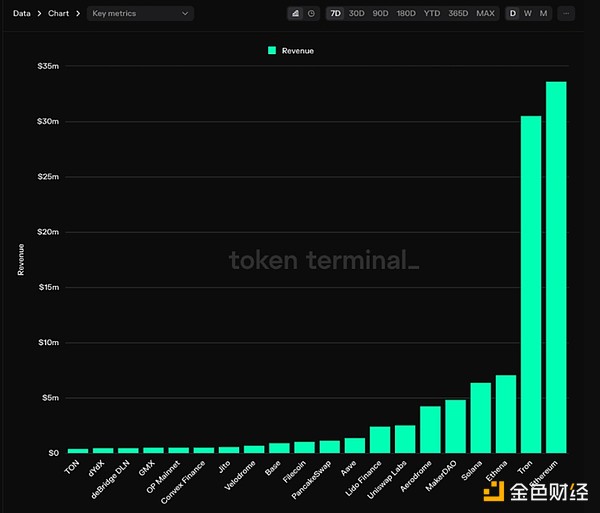
Source: Token Terminal [Date: Week commencing Monday, May 27, 2024]
Ethena’s revenue has grown significantly, with its synthetic USDe becoming the fourth largest stablecoin by market capitalization. Here are some highlights about Ethena’s revenue growth:
Revenue Lead:In the last week of May, Ethena’s USDe generated $7 million in revenue, surpassing Solana’s $6.3 million. Only Tron and Ethereum’s DApp revenues exceeded it.
Market Cap:USDe’s market cap has surpassed $3 billion, making it the fastest-growing crypto-USD asset in crypto history.
Revenue Forecast:According to Token Terminal, Ethena is expected to generate a staggering $222.5 million in revenue over the next 12 months.
Since the ENA token is the governance token for the Ethena protocol, token holders may have the opportunity to vote on proposals that could include a revenue distribution mechanism. This could allow ENA holders to influence decisions about how protocol revenue is distributed, which could include returning a portion of the proceeds generated from USDe staking or other protocol activities to token holders.
Recently, Ethena announced an update to the ENA token roadmap and the introduction of new initiatives for the ENA token economics. Ethena is rolling out staking capabilities for ENA, which will provide security for cross-chain transfers and integrate ENA into its financial infrastructure, including the upcoming Ethena Appchain. In addition, a new requirement requires users to lock up at least 50% of claimable tokens to incentivize long-term cooperation among ENA holders. The move is part of a broader strategy to ensure ecosystem stability and growth.
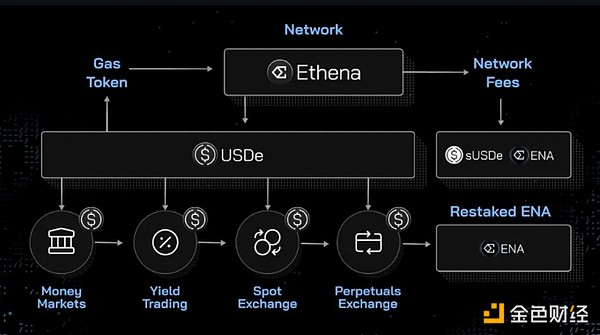
Source: $ENA Token Economics Update — Ethena Labs
The protocol introduces universal restaking of ENA and the potential for rewards for ENA restaking pools within Symbiotic. The introduction of universal restaking pools marks an expansion of ENA’s utility. These pools will leverage the LayerZero DVN messaging system to provide economic guarantees for cross-chain transfers of USDe. The initiative is part of the broader Ethena Appchain development, which aims to build financial applications and infrastructure using USDe as the primary asset. ENA staked in these pools will receive a variety of rewards, including high multipliers, Symbiotic points, and potential future distributions from LayerZero.
Looking ahead, ENA's utility will expand significantly. The Ethena roadmap outlines plans to integrate ENA into a variety of financial applications and infrastructure solutions on the Ethena Appchain. These include spot DEXs, perpetual decentralized exchanges, yield trading platforms, money markets, and low-collateralized lending protocols. Additionally, ENA can play a role in on-chain prime brokerage services, options, and structured products. Such a wide range of applications will not only enhance ENA's utility, but also drive its demand as the ecosystem grows.
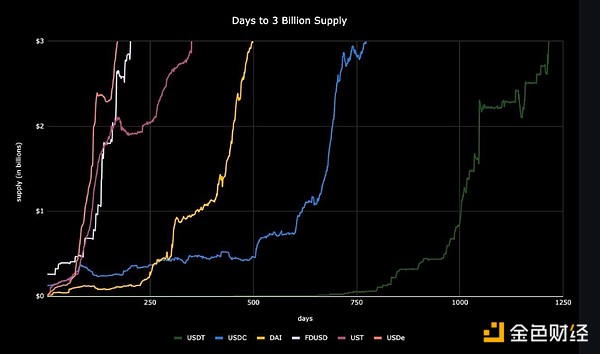
Source: X (@leptokurtic_)
The approval of the Ethereum ETF marks a pivotal moment for the cryptocurrency market, similar to the impact of the Bitcoin ETF earlier this year. This development is expected to bring a lot of liquidity and institutional interest to Ethereum, which could affect prices and markets. Ethena, with its synthetic USDe and yield token sUSDe, is well-positioned to benefit from these changes. The potential for increased demand for ETH-related financial instruments could drive positive funding rates and create arbitrage opportunities, resulting in higher yields for sUSDe holders. This growth comes on the heels of the approval of a Bitcoin ETF.
However, it is critical to recognize the inherent risks that come with such rapid growth and market changes. Ethena must navigate challenges associated with funding rate volatility, liquidity management, and custody and smart contract vulnerabilities. Despite these risks, the platform’s transparent approach to risk management and proactive measures, such as real-time dashboards and use of diverse providers, give it a level of confidence.
USDe has been growing exponentially since its inception, becoming the fastest cryptocurrency to reach $3 billion in market cap. With the approval of an Ethereum ETF, Ethena is expected to grow further. In addition, there is the upcoming expansion of ENA’s utility through initiatives such as revenue sharing and the Ethena Appchain, which may provide additional value and stability. Therefore, it is important to keep a close eye on opportunities.
A.1 January 2024: Paving the Way for Bitcoin ETF
In January 2024, the spot Bitcoin ETF was approved, a major milestone that paved the way for altcoin ETFs, with Ethereum becoming the next possible candidate. The success of Bitcoin ETFs has brought unprecedented net inflows, solidifying BTC’s position as a legitimate investment asset. The launch of these Bitcoin tracking funds proved to be one of the largest debuts in ETF history. According to Morningstar Direct, it translated into $8 billion in net inflows. As of the end of June, these nine newly launched products had accumulated $38 billion in assets, proving investors’ strong interest in investing in cryptocurrencies through traditional financial instruments.
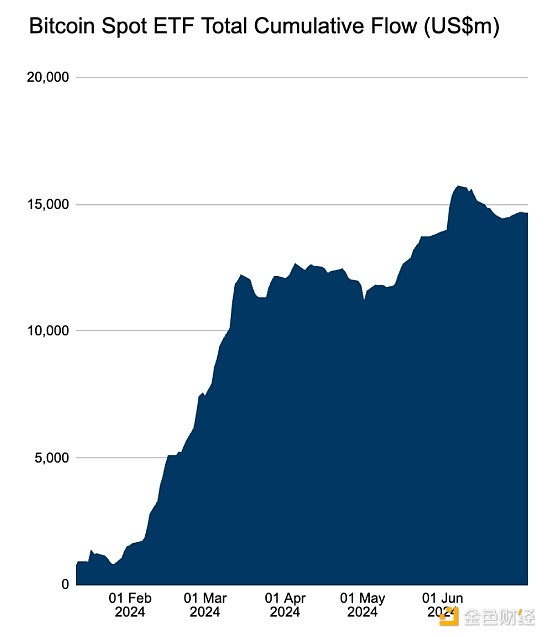
Source: Bitcoin ETF Flow – Farside Investors
In May 2024, the U.S. Securities and Exchange Commission (USEC) made a major rule change, approving applications from major exchanges to list Ethereum spot ETFs. The decision allows Nasdaq, the New York Stock Exchange, and the Chicago Board Options Exchange (Cboe) to list eight Ethereum ETFs. The SEC’s approval came after the applicants amended their filings to comply with regulatory preferences, specifically removing Ethereum collateral from the ETF fund’s operations, which was seen as a potential roadblock to approval.
The rule change requires ETF issuers to update their Form 19b-4, which is used to propose new rules or changes to existing rules for self-regulatory organizations such as stock exchanges. While the SEC approved these forms for eight Ethereum spot ETFs, including those from Bitwise, BlackRock, and VanEck, the issuers still need to obtain approval of their respective S-1 registration statements before they can officially begin trading.
In June 2024, expectations for the approval of an Ethereum ETF continued to rise. SEC Chairman Gary Gensler said the approval process was going well, with some analysts predicting a launch as early as July 4. However, the SEC delayed the launch of the spot Ethereum ETF, pushing it back to mid-July or later.
Delays in Ethereum ETF approval by July 2024 have created uncertainty among investors. Although some analysts predict the product will launch within the next two weeks, the market remains cautious. Bitwise filed an amended S-1 form indicating that the product is close to being ready for listing, but comments from the SEC pushed the timeline back further. Market sentiment is mixed, with some analysts predicting that ETH's price could fall if the ETF does not generate significant inflows.
Reports suggest that the spot Ethereum ETF could begin trading as early as next week. The U.S. Securities and Exchange Commission has notified ETH exchange-traded fund issuers that their funds can begin trading on July 23, 2024, according to people familiar with the matter. The SEC reportedly had no further comments on the recently filed S-1 form and requested a final version be submitted by Wednesday, July 17. The market's reaction reflects growing optimism about the potential impact of these new financial products on the broader cryptocurrency ecosystem.
For many large groups of non-crypto native capital, Ethereum has much lower buy-in as a key portfolio allocation.
 JinseFinance
JinseFinanceAs the blockchain and decentralized application space continues to evolve, new token models and value drivers will emerge, requiring multidisciplinary teams to evaluate and navigate this space.
 JinseFinance
JinseFinanceWith the help of technologies such as Taproot and BitVM, more complex off-chain contract verification and settlement can be achieved within DLC, while combined with the OP challenge mechanism, minimization of oracle trust can be achieved.
 JinseFinance
JinseFinanceAnti-dumping principles are designed to protect cryptocurrency investors from pump-and-dump schemes.
 JinseFinance
JinseFinanceTherefore, no matter what choice investors make at this stage, they cannot have the best of both worlds and must face the possible consequences.
 JinseFinance
JinseFinanceA little-known Bitcoin ETF hits the U.S. market this month, promising impressive annual returns for its investors.
 JinseFinance
JinseFinanceOn January 30, 2024, MIM_SPELL suffered a flash loan attack. Due to a precision calculation vulnerability, the project lost $6.5 million.
 JinseFinance
JinseFinanceAfter Ethereum entered the 2.0 era, pledging ETH to run nodes has become a new business.
 JinseFinance
JinseFinanceThe proposed environmentally conscious spot ETF was found to be insufficiently protected against fraud and manipulation, like many ETF proposals before it.
 Cointelegraph
CointelegraphTwo ETF issuers filed two new and innovative applications for an inverse fund and a leveraged fund.
 Cointelegraph
Cointelegraph


Please enter the verification code sent to